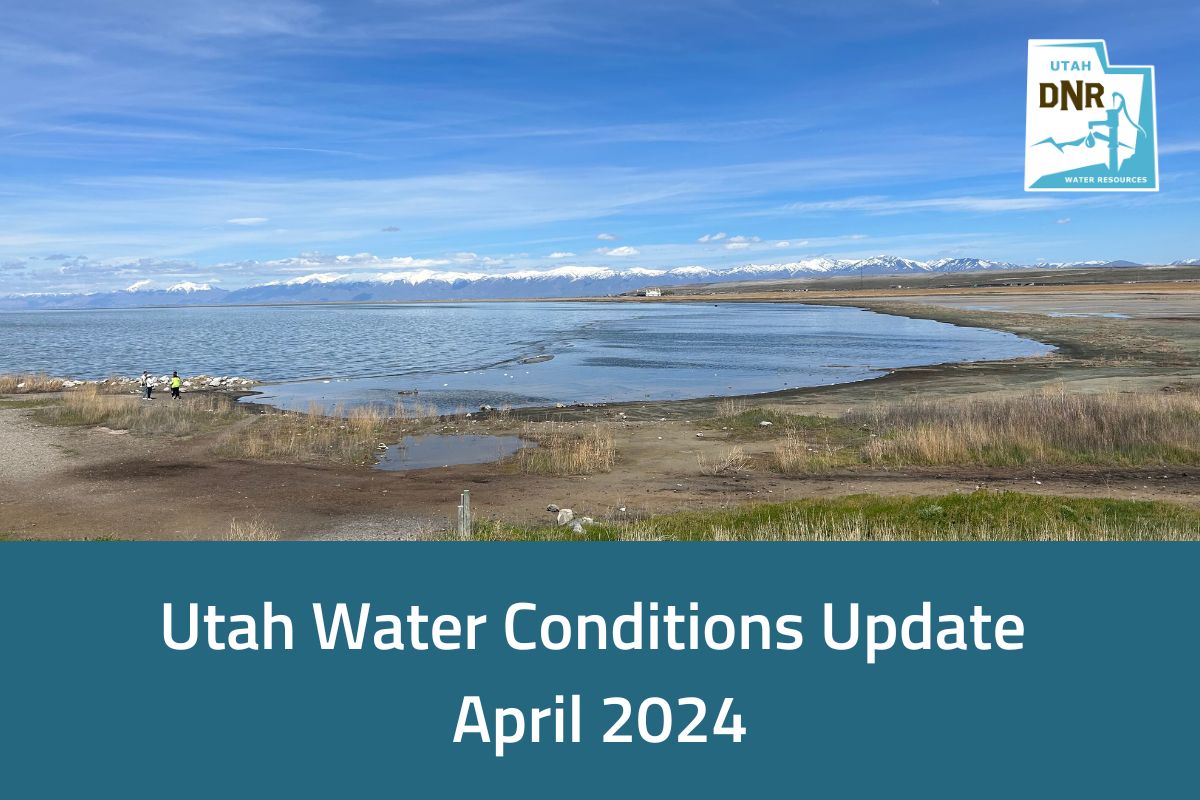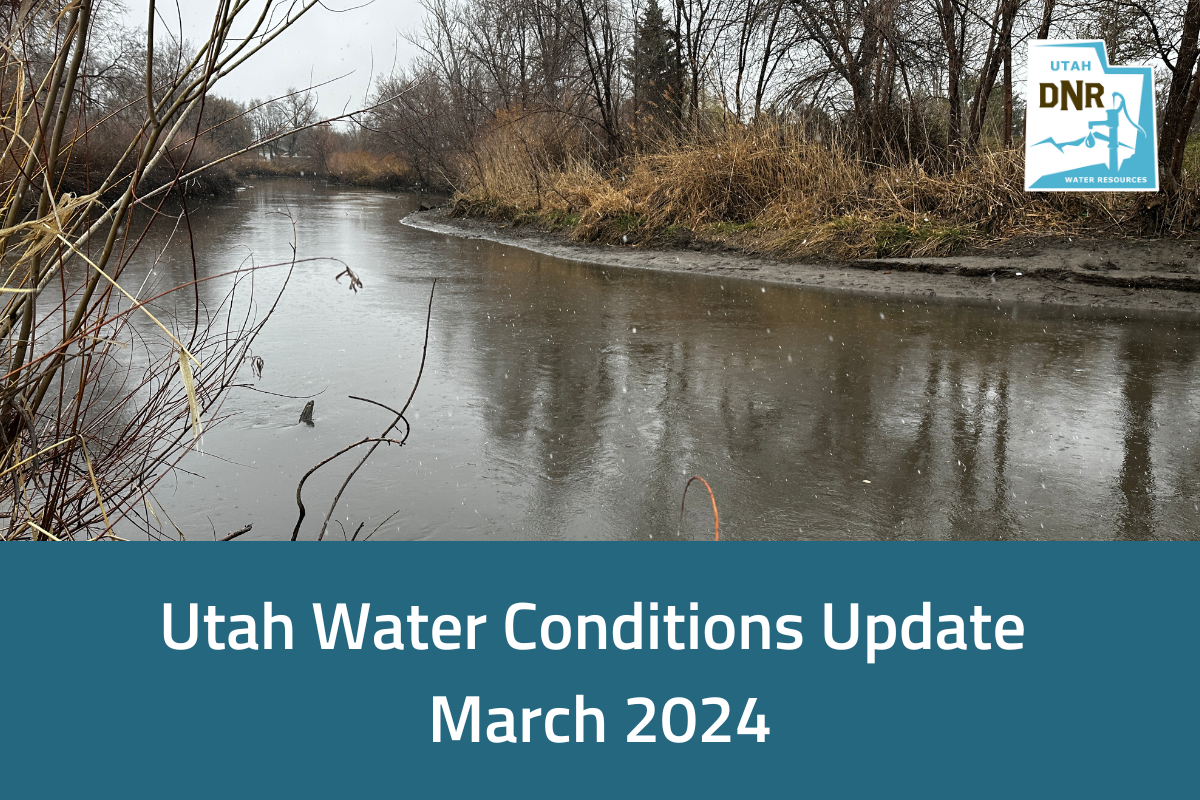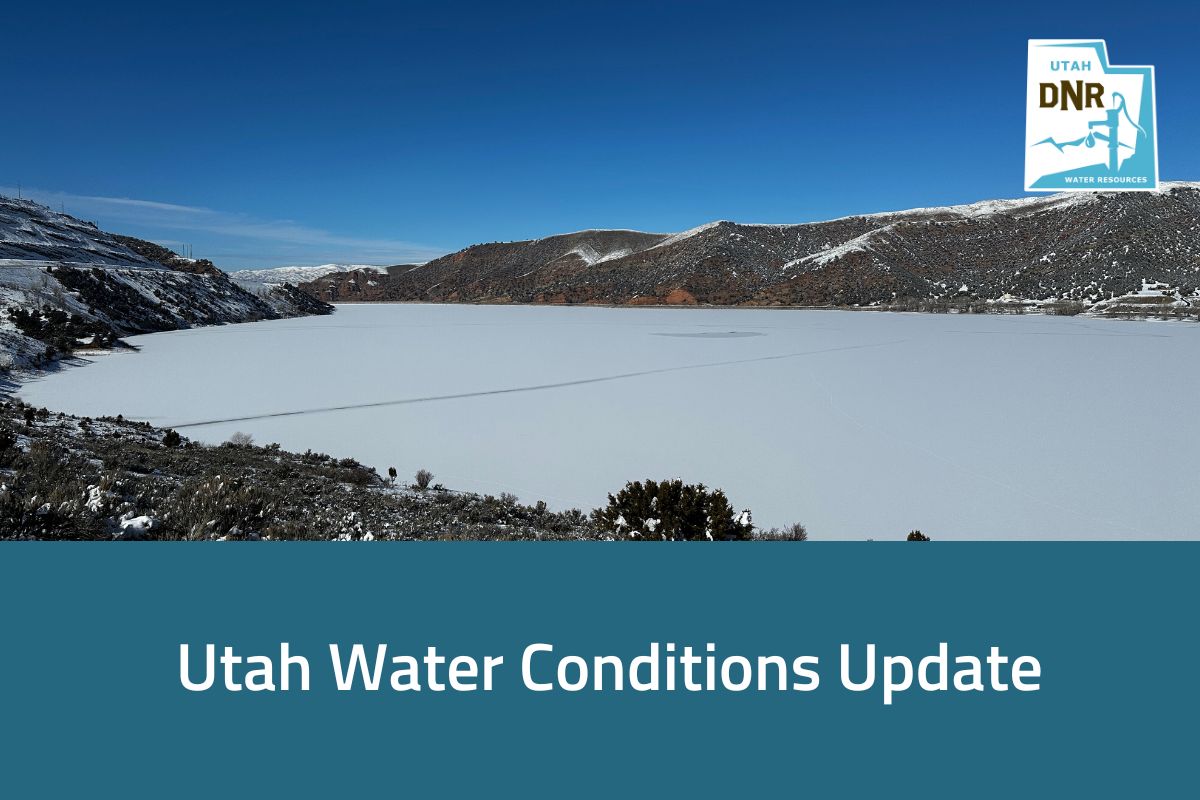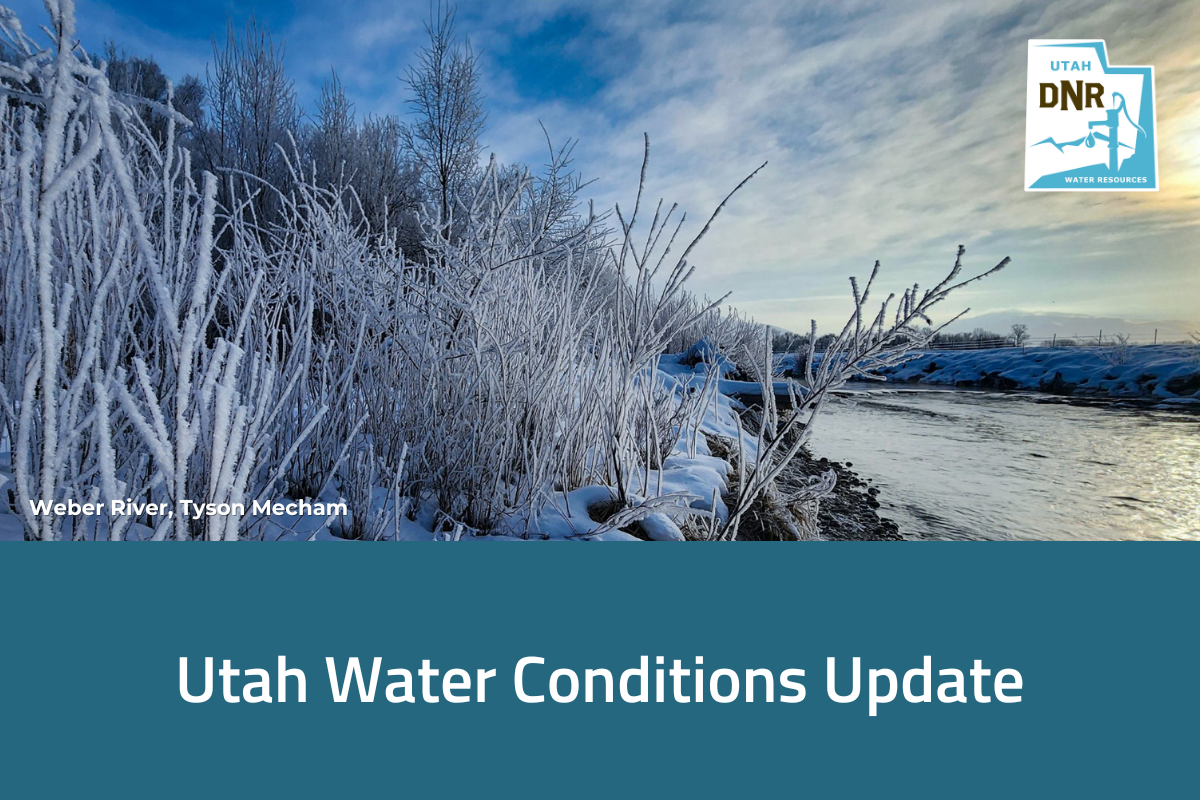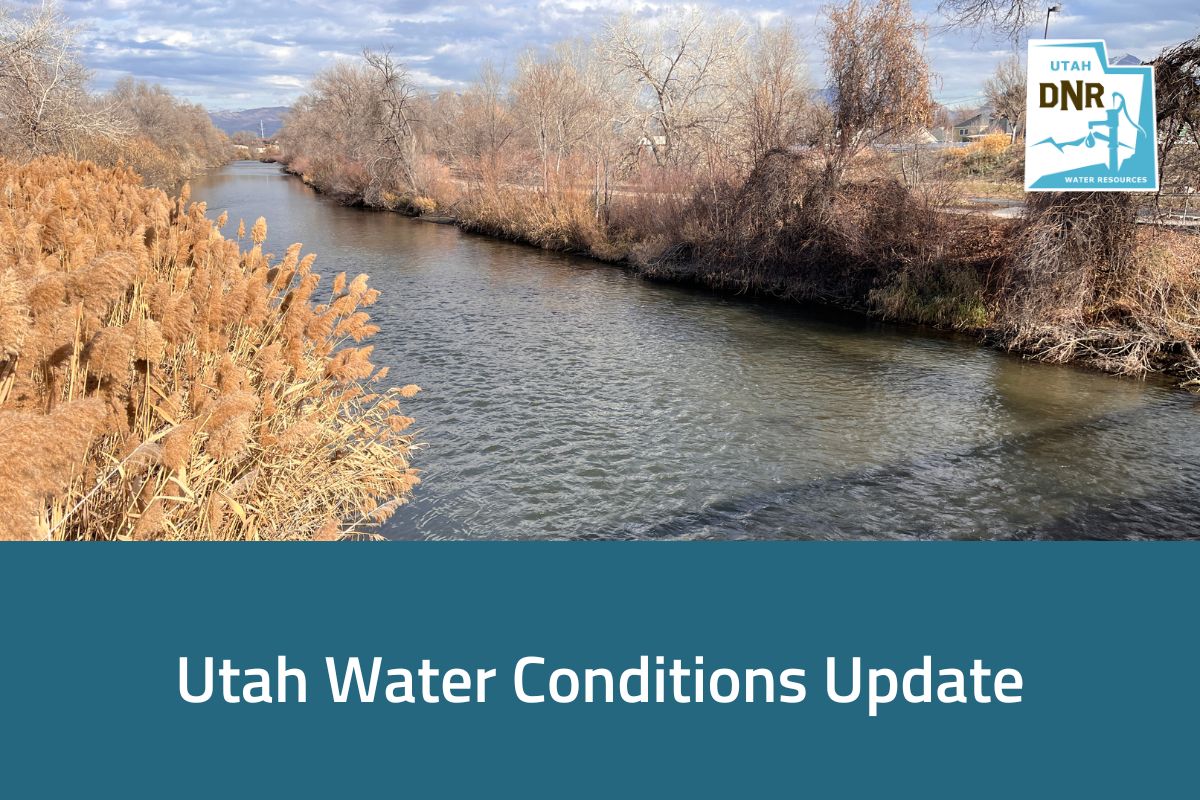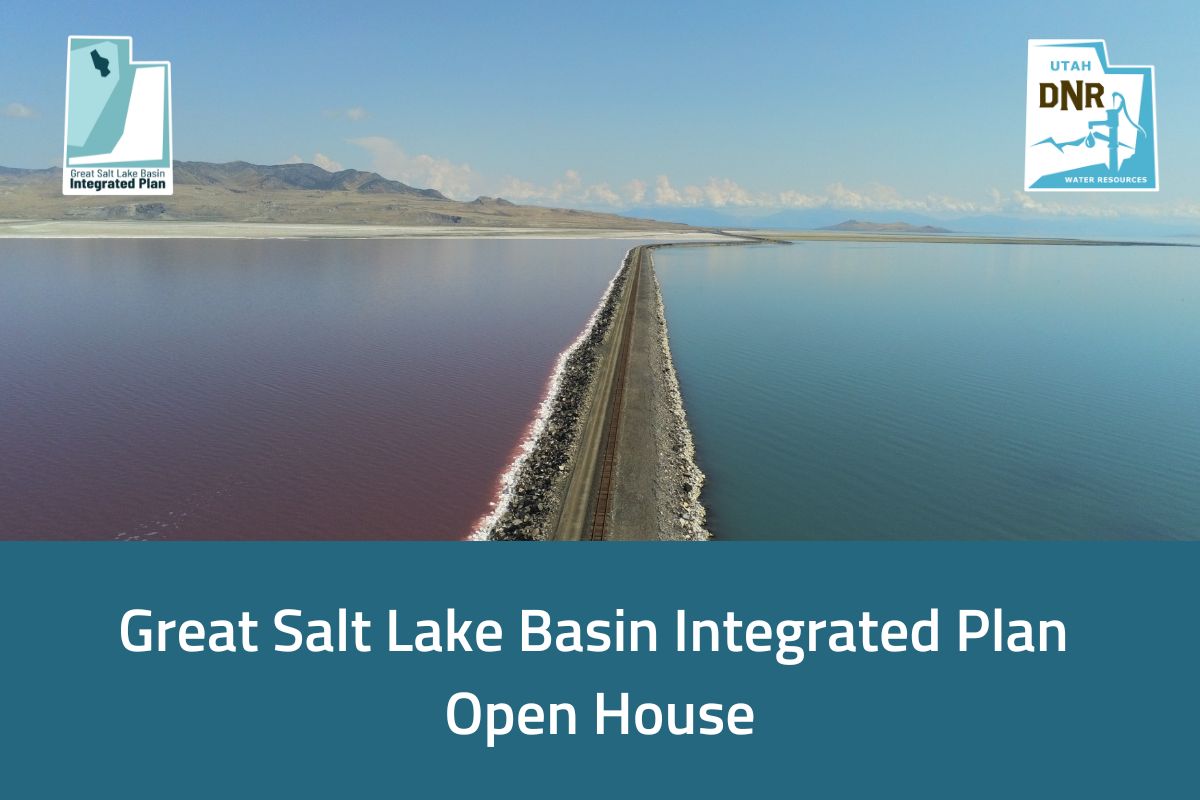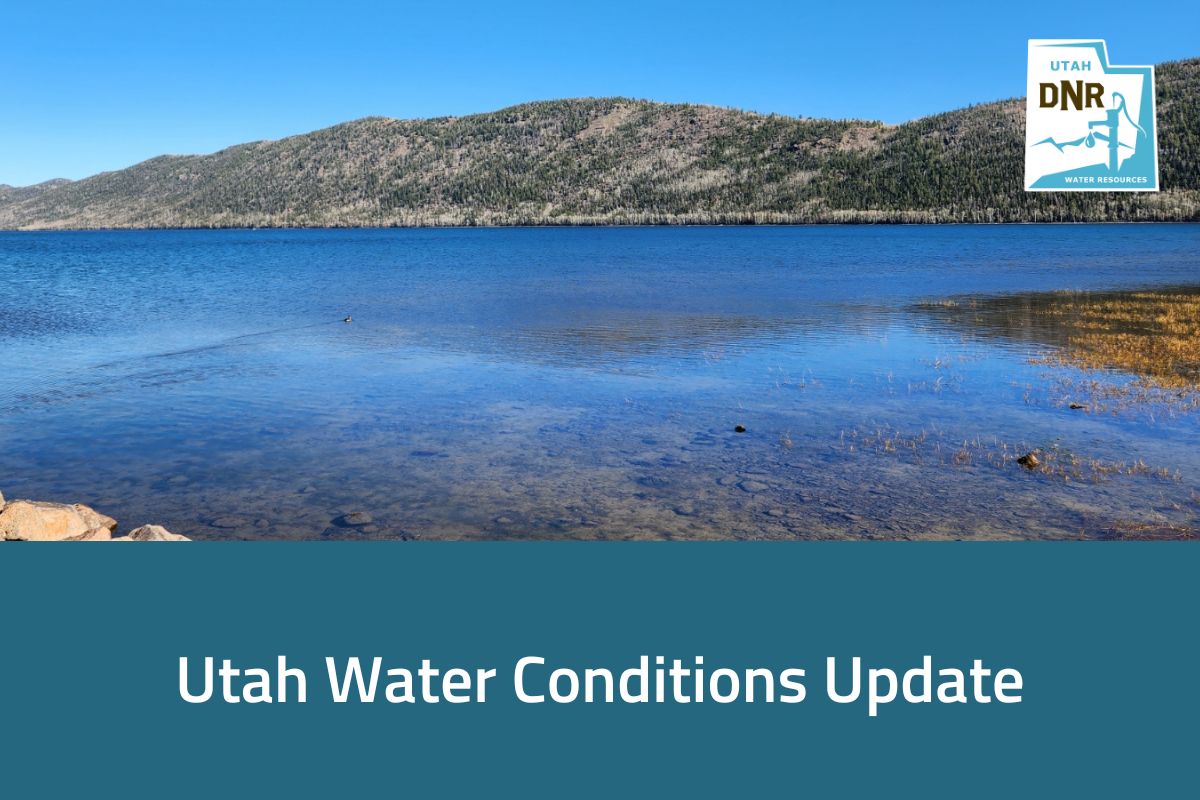SALT LAKE CITY (April 18, 2024) – As April unfolds, Utah’s water situation reflects a delicate balance between melting snowpack, reservoir management and rising temperatures. Recent data suggests that we most likely witnessed the peak of our snowpack, reaching 18.8 inches on April 2, surpassing the median peak snowpack of 16 inches.
(more…)Work Plan for the Great Salt Lake Basin Integrated Plan Now Complete
Published 04-15-24
Specific actions outlined to help ensure a resilient water supply for the lake
SALT LAKE CITY (April 15, 2024) – The Utah Division of Water Resources and the Bureau of Reclamation are pleased to announce the finalization of the Work Plan for the Great Salt Lake Basin Integrated Plan (GSLBIP), which charts the course for developing the GSLBIP.
After a 65-day comment period, the initial draft Work Plan was updated in response to recommendations and to include the specific actions necessary for completing the GSLBIP.
(more…)Utah Water Conditions Update March 2024
Published 03-07-24
SALT LAKE CITY (March 7, 2024) – Utah’s water outlook for March is marked by encouraging developments and notable records. Alta recently experienced its wettest February on record, showcasing the dynamic nature of our climate and its potential impact on water resources.
“Alta’s record-breaking February reminds us how much can change in a month,” Candice Hasenyager, director of the Division of Water Resources, said. “Our statewide snowpack has been consistently above normal since the beginning of February, which has really put Utah in a good position as we head into spring.”
(more…)Utah Water Conditions Update February 2024
Published 02-15-24
Great Salt Lake story map released
Published 02-07-24
SALT LAKE CITY (Feb. 7, 2024) – In response to a recent request from the Great Salt Lake Strike Team, the Utah Division of Water Resources produced a dynamic new story map as an educational resource to define the processes that dictate the health of the Great Salt Lake.
(more…)Utah Water Conditions Update
Published 01-18-24
Utah Water Conditions Update
Published 12-21-23
SALT LAKE CITY (Dec. 20, 2023) – As of late-December, northern Utah has seen some positive progress in the snow season, while the southern part of the state is still recording below-normal numbers. With 105 days remaining until the typical peak snowpack, the state is planning for all scenarios.
Statewide Snow Water Equivalent (SWE), which determines the amount of water available in the snow, is slightly below normal for this time of year. One notable highlight is soil moisture, which is in a favorable state. Adequate soil moisture supports healthy spring runoff, agricultural activities and sustaining ecosystems.
(more…)Great Salt Lake Basin Integrated Plan Open House
Published 12-05-23
Informational open house Dec. 7
SALT LAKE CITY (Dec. 5, 2023) – Upon completion of the draft Work Plan for the Great Salt Lake Basin Integrated Plan, the Utah Division of Water Resources, in collaboration with the Bureau of Reclamation, will be holding a virtual open house on Thursday, Dec. 7.
“The Great Salt Lake is a unique and precious resource for the state of Utah. We recognize its vital role in our environment, economy and culture,” said the Division of Water Resources Director Candice Hasenyager. “This plan is a significant step toward addressing the complex challenges we face in preserving and protecting this remarkable natural wonder.”
(more…)Utah Water Conditions Update
Published 11-30-23
SALT LAKE CITY (Nov. 30, 2023) – As Utah approaches the end of fall, water experts are closely monitoring the state’s water conditions, presenting a mixed picture of hope and caution.
Snow Water Equivalent (SWE), a critical metric for assessing water availability, currently stands at 39% below normal for this time of year. With 125 days remaining until the typical peak snowpack, the state is cautiously optimistic about the potential for a good snow year.
(more…)Utah Statewide Water Marketing Strategies: Dynamic Tools to Facilitate Water Marketing
Published 11-01-23
Draft Statewide Water Marketing Strategies Report, water marketing website, and dynamic resources. Please join us for a public open house on Nov. 7, details below.
SALT LAKE CITY, (Nov. 1) — The Board of Water Resources is pleased to announce pivotal milestones in water management with the release of the draft Statewide Marketing Strategies Report, online water marketing materials and dynamic resources for water users. With demand for water increasing, water marketing is one method of achieving multiple state-wide water priorities and policies.
(more…)
